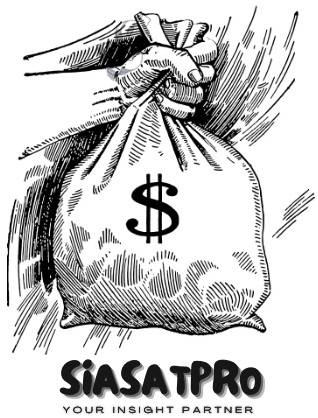Some worries persist, even though the government’s efforts to control pulse prices and the strong kharif sowing are anticipated to have a sobering effect on inflation.
June saw a four-month high of 5.08% for retail inflation, driven up by the rigidity of grain prices and an additional spike in the already high costs of fruits and vegetables due to the country’s heatwaves, according to official statistics released on Friday.
The headline print defied a downward trend that had been in place since December 2023 and was on the higher side of estimates.
Also Read Joe Biden: Kamala Harris ‘Qualified to Be President’!
In May, the inflation at the retail level, measured by consumer price index (CPI), was 4.8%, and in June 2023, it came in at 4.87%.
However, the inflation rate is likely to see a sharp moderation in July to around 3%, for the sole reason of a very high base (7.44%), even if price pressures remain broadly unchanged. That however could be a transient reprieve.
The Reserve Bank of India noted in its biweekly monetary policy statement in June that “volatile and elevated food inflation due to adverse weather events” had disrupted the path of disinflation, which was driven by a softening in its core component. The most recent statistics supported this assessment.
While headline inflation was slowing down, it was still higher than the 4% target, according to RBI governor Shaktikanta Das, who also declared that it was “too pre-mature to even think about repo rate cuts at this juncture.”
| Quarter | CPI Inflation (%) |
|---|---|
| Q1 | 4.9 |
| Q2 | 3.8 |
| Q3 | 4.6 |
| Q4 | 4.5 |
According to RBI projections, CPI inflation for the full year 2024–25 is expected to be 4.5%.
Also Read Insurance Arrest: Abhishek Singhvi On CBI Action Arvind Kejriwal!
Core inflation, most amenable to demand-management measures by the RBI, saw a moderate rise to 3.16% in June from 3.12% in May. This was the first rise in the core inflation rate in 19 months. “This was the seventh consecutive print of a sub-4.0% core inflation print, benefitting partly from the protracted impact of last year’s softening in commodity prices, Aditi Nayar, chief economist at Icra wrote.
Inflation in “food and beverages” rose from 7.87% in May to 8.36% in June. In June 2023, the inflation in this category, with a weight of 45.8% in the CPI, was 4.69%.
The overall CPI increased 1.33% on month in June, the fastest pace in a year, while consumer food price index (CFPI) rose sharper 3.17% sequentially.
In July, prices rose further for cereals, milk and milk products, fruits and vegetables. while prices fell for meat and fish, egg, oils and pulses. Inflation in cereals rose to 8.75% in July from 8.69% in June, while that in milk to 3% (2.62%), fruits to 7.15% (6.68%) and vegetables to 29.32% (27.33%). Inflation rate, however, fell for fish to 5.39% (7.28%) and egg to 3.99% (7.62%) while oil and fats remained in the deflation zone at -2.68% (-6.71%).
“We expect food inflation to moderate going ahead as the base effect plays out and new harvests arrive in the market. For FY25, we expect inflation to average 4.8%. If food inflation moderates, we expect the RBI to cut the policy interest rate by a shallow 50 bps in two tranches in the second half of the fiscal year,” Rajani Sinha, chief economist at Care Edge Ratings.
While analysts had expected telecom tariff hikes to push the inflation in transport and communications, the price pressures in the segment remained subdued, as the transport tariffs stayed low.
In June, retail inflation in rural India stood at 5.66%, compared with 4.49% in the urban sector. However, CFPI-urban rose by sharper 9.55% in the month, compared with 9.15% for CFPI-rural.
According to Sujan Hajra, chief economist & executive director at Anand Rathi Shares and Stock Brokers, “even if the headline print decrease in the coming quarter due to a higher base, the key point is the uncertainty, which will likely delay a rate easing cycle in India.” Hajra added that stronger index of industrial production numbers – growth in industrial production came at a better-than-expected 5.9% in May, data released separately said – would also enable the RBI to keep rates elevated.
While robust kharif sowing and the measures being taken by the government to put a lid on prices of pulses are expected to have a sobering impact on inflation, some concerns remain.
“Kharif crops were sown on 37.9 million hectares by July 8, 2024, accounting for 34% of the total area covered in the 2023 season. While this entails a healthy YoY expansion of 14.1%, it was largely driven by a low base as sowing had only gathered momentum towards the latter part of the season in 2023. Compared to the similar period of 2022, cumulative kharif sowing was 2.1% lower up to July 8, 2024, amid large lags in crops such as rice and pulses,” Nayar noted.
Stay Connected With us: Siasatpro.com



Recent Comments